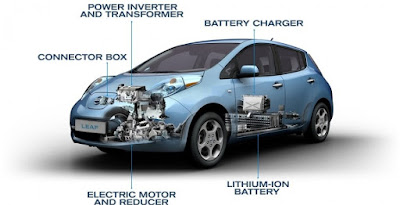Welding and brazing are the metal joining process.Type of joining process to be applied for joining two parts depends on many factors.

WELDING :
>Welding is a process in which both the participating metals are metaled and re solidified to complete as one metal. Proper melting of mating parts is a basic criteria to result a sound weld.
BRAZING :
>In case of Brazing both the participating metals are not melted but a third metal of lower melting point is used to be filled in between the two. The solidification of this third metal results the joining.
>The filler metal is drawn into the gap between the closely fitted surfaces of the joint by capillary action.
>The design of the joint should incorporate a minimum gap into which the braze filler metal will be drawn.

Comparison between welding and brazing :
S.No
|
Welding
|
Brazing
|
1
|
Welding joints are strongest joints used to bear the load. Strength of the welded portion of joint is usually more than the strength of base metal.
|
Brazing joints are weaker than welding joints. This can be used to bear the load up to some extent.
|
2
|
To join, work pieces need to be heated till their melting point.
|
Work pieces are heated but below their melting point.
|
3
|
Heat cost is involved and high skill level is required.
|
Cost involved and skill required is lower than welding.
|
4
|
Mechanical properties of base metal may change at the joint due to heating and cooling.
|
mechanical properties may change at joint but it is almost negligible.
|
5
|
Temperature required is 3800°C in welding joints.
|
Temperature may go to 600°C in brazing joints.
|
6
|
Heat treatment is generally required to eliminate undesirable effects of welding.
|
No heat treatment is required after brazing.
|
7
|
No preheating of workpiece is required before welding as it is carried out at high temperature.
|
Preheating is desirable to make strong joint as brazing is carried out at relatively low temperature.
|
If you find this article helpful kindly share it with your friends and if you want to add something to it feel free to write in comment box.
Thank You !









